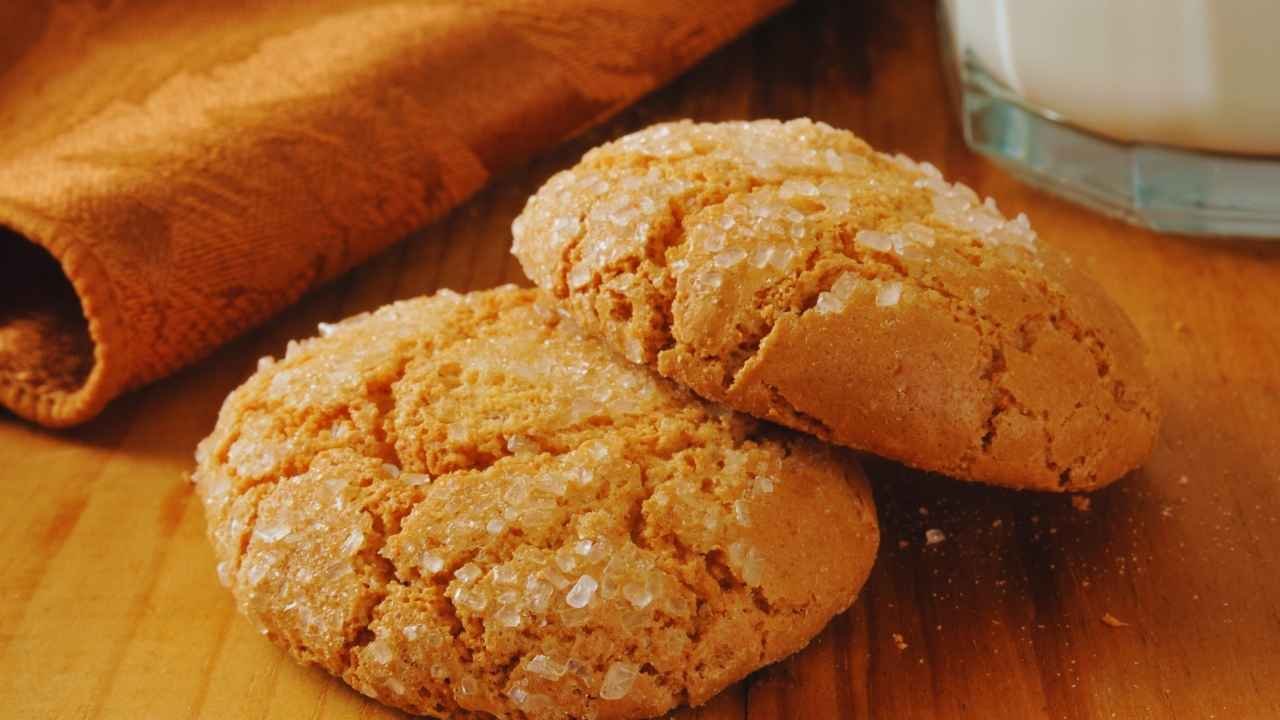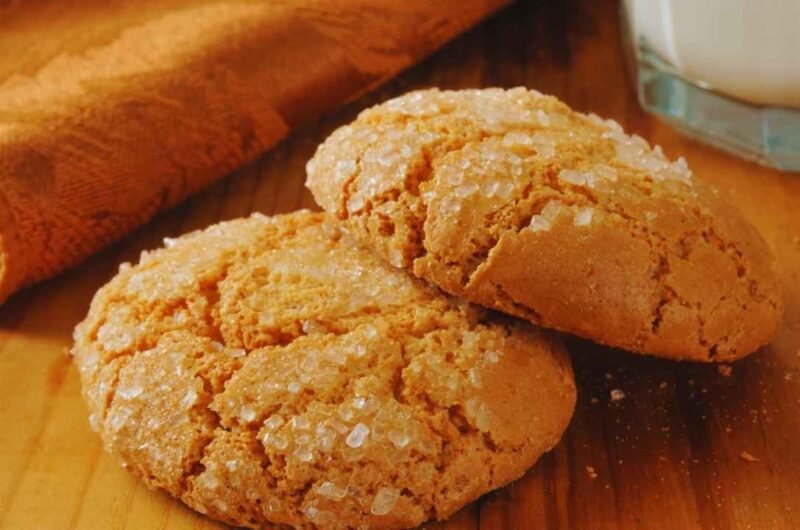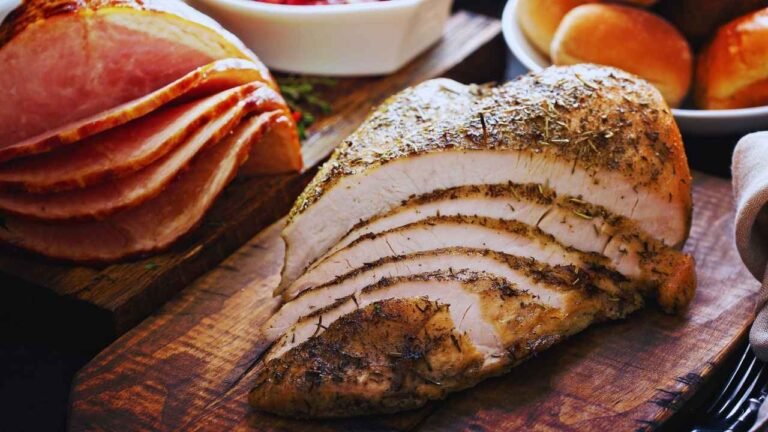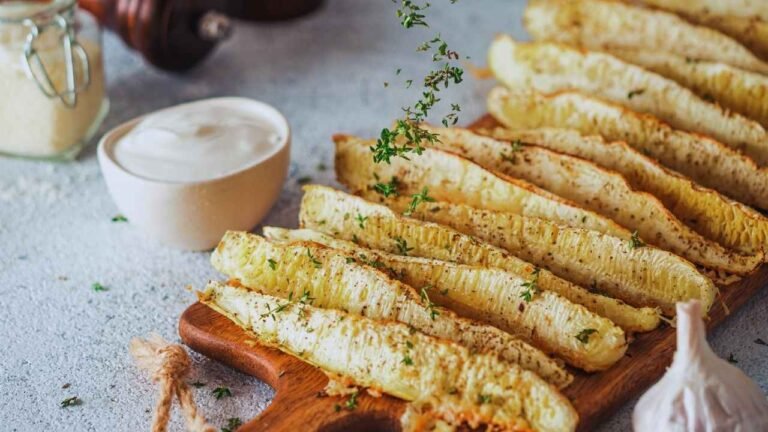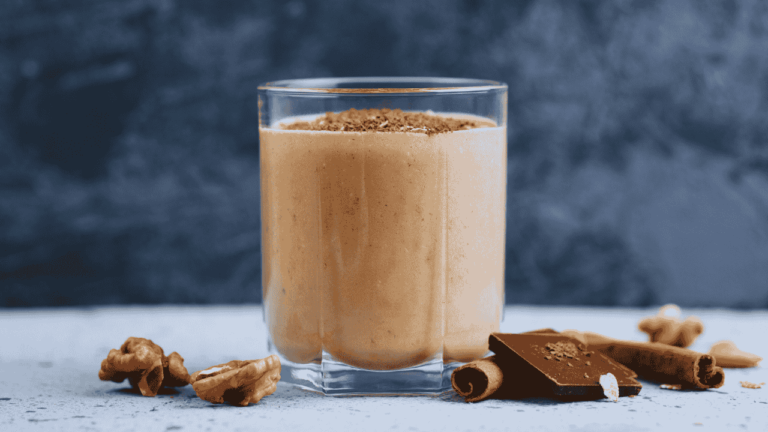How to Make the Perfect Almond Cookie Recipe: Easy Steps
Almond cookies blend gentle sweetness with nutty flavors that make them popular worldwide. A good recipe turns basic ingredients into crisp and tender treats. These cookies taste as good as the ones from professional bakeries. They’re perfect for casual snacking and dessert lovers alike.
Great almond cookies need careful attention and quality ingredients. Bakers should start with the best almond extract and flour. The right mixing techniques and baking methods make all the difference. This piece shows each step clearly so you can bake perfect cookies every time.
Choose the Right Almond Flavoring
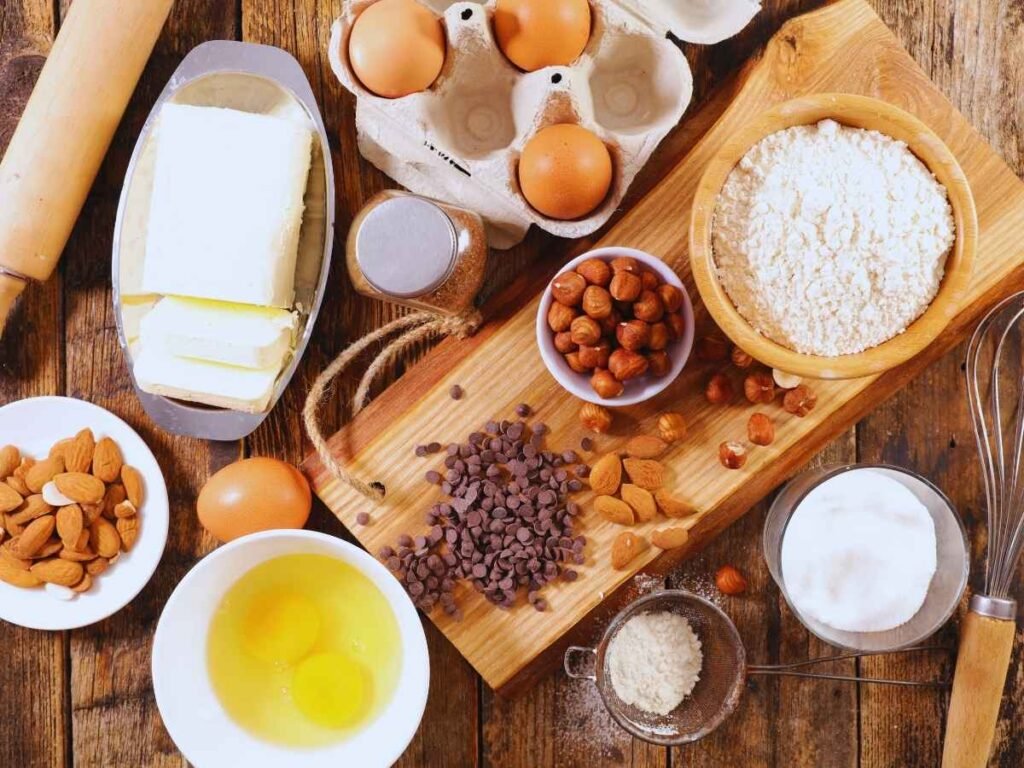
Great almond cookies start with choosing the perfect almond ingredients. These ingredients shape both the cookie’s texture and taste in their own special way.
Almond extract
Almond extract works as a concentrated flavoring that enriches cookie recipes. Pure almond extract contains water, alcohol, and oil from bitter almonds that creates an authentic taste profile. Artificial alternatives combine synthesized benzaldehyde and still achieve excellent results in baking. Bakers should think about these qualities before choosing an extract:
- Pure extracts create more complex, natural flavoring
- Artificial versions ensure consistent, reliable results
- Organic options bring subtle, earthy undertones
- Emulsions pack heightened potency for intense flavor
Ground almonds
Ground almonds, also called almond meal, add a rustic texture and strong flavor to cookies. Whole, unpeeled almonds create this coarse ingredient that leaves brown specks throughout your baked goods. Your cookies get extra fiber and minerals from the almond skins, which also create a deeper nutty taste. These ground almonds work especially well when you want to give your recipes a traditional, homestyle look.
Almond flour options
You’ll find almond flour in several varieties that work best for different types of baking. Blanched almond flour comes from skinless almonds and gives you the finest texture with the lightest color. Your cookies will look smooth and uniform, just like ones made with regular wheat flour.
Defatted almond flour is a special variety that’s great for specific baking projects. The process removes some natural oils and you get:
- Higher protein content (45-50g per 100g)
- Lighter texture and paler color
- Better structural properties
- Crispier finished cookies
The type of cookie you want to make should guide your flour choice. Regular blanched almond flour works great in most recipes. Defatted varieties make cookies that are crisp and well-structured. Traditional almond flour’s natural fat content makes it perfect for recipes that need to stay moist.
Your choice of almond flavoring will shape your cookie’s final taste and texture. A mix of different forms, like using both extract and flour together, can add layers of almond flavor that make your cookies taste even better.
Master the Cookie Dough Consistency

Perfect dough consistency makes almond cookies turn out great. Temperature control and proper mixing techniques play crucial roles in the recipe. These basic elements will give a delicious batch of cookies every time.
Proper butter temperature
Your cookies’ structure depends on getting the temperature just right. Perfect cookies need butter between 60°F and 68°F. This temperature range helps the butter trap air as you mix and you retain control of the dough’s structure. Many bakers make the mistake of using butter that’s too warm. Butter above 70°F won’t hold air properly and creates dense, flat cookies.
To get the right temperature:
- Cut cold butter into quarter-inch pieces
- Let rest for 10 minutes in a 70°F kitchen
- Use a digital thermometer for accuracy
- Avoid microwave softening
Creaming technique
Perfect cookie texture starts with a proper creaming process. Everything in making almond cookies depends on these simple steps:
- The butter temperature must be precisely 60°F
- Combine butter and sugar at medium speed
- Mix the ingredients for exactly 5 minutes
- The bowl’s sides need frequent scraping
- Each cold egg should be added individually
- The mixing should end once ingredients combine
Keep in mind: Dense cookies will result if you over-mix the dough because it warms up and loses trapped air.
Chilling the dough
Chilling cookie dough isn’t just a convenience step – it’s a significant technique that turns good cookies into exceptional ones. The best chilling time spans 24 to 72 hours, and this waiting period creates magic in your dough:
- Flavors intensify and develop complexity
- Flour absorbs moisture more effectively
- Dough structure becomes more stable
- Cookies maintain better shape while baking
- Texture becomes chewier and more satisfying
Almond flour cookie recipes need this chilling process especially when you have natural oils from almonds that must blend properly with other ingredients. You should wrap the dough tightly in plastic wrap and keep it in the refrigerator. The dough might start drying out after 72 hours, so don’t chill it longer than that.
Let the chilled dough rest at room temperature for 10-15 minutes before you portion it. This short warming period makes the dough easier to handle while keeping its improved qualities intact. Your best bet is to portion the dough before chilling – that way you can bake it immediately whenever needed.
Perfect Your Baking Technique

Learning to become skilled at the baking process will turn a properly prepared almond cookie recipe into something exceptional. The right blend of temperature, timing, and visual cues will give you perfect results every time you bake.
Oven temperature considerations
Almond cookies taste best at the time they’re baked between 350°F to 375°F. Many bakers might think over using 400°F, but this temperature makes cookies brown too fast on the bottom while the top stays pale. The perfect cookie needs these essential steps:
- The oven needs full preheating before you start
- Your rack should sit right in the oven’s middle
- An oven thermometer helps you stay accurate
- Dark baking sheets need a 25°F lower temperature
Baking time tips
Cookie size and desired texture determine the baking time. Follow these standard steps:
- Set original timer for 8 minutes
- Check cookies for spreading and edge coloration
- Add 2-3 minute intervals as needed
- Monitor closely during final minutes
- Adjust timing for subsequent batches based on results
Cookie size substantially affects the baking duration. Small cookies typically need 8-10 minutes to bake. Larger ones require 12-15 minutes for proper doneness. Careful observation makes all the difference, and a single minute can change the texture dramatically.
Signs of doneness
Perfect almond cookies need several telltale signs to show they’re ready. Raw dough transforms into beautifully baked cookies through a series of changes that tell you exactly when to pull them from the oven:
Visual indicators:
- Light golden brown edges
- Surface changes from shiny to matte
- Small cracks might appear on top
- Center looks set but stays lighter than edges
Physical indicators:
- Firm edges to a light touch
- Center gives slightly under gentle pressure
- Golden brown color across the bottom
- Subtle spread and rise
The cookie’s texture needs proper cooling time to develop. A 5-minute rest on the baking sheet before moving to a wire rack helps the structure set. This creates that perfect mix of chewy centers and crisp edges.
Almond flour cookies need extra attention because they brown faster than regular cookies. The natural oils in the flour speed up browning, so you’ll need to watch them closely.
Different ovens can bake quite differently. Convection ovens need a 25-degree lower temperature and less baking time. New bakers should stick close to the oven and check often. Taking notes about times and temperatures helps nail it next time.
These treats will get firmer as they cool, so it’s better to pull them out a bit early. The right timing creates cookies with crispy edges and soft centers that really show off their almond flavor.
Enhance Flavor and Texture

A simple almond cookie recipe becomes extraordinary with ingredients that boost both flavor and texture. Extra touches change these cookies into bakery-worthy treats that delight the senses.
Adding almond slivers
Sliced almonds will give a beautiful look and delightful crunch to your cookies. The almonds should be toasted in a 350°F oven for 7 minutes and cooled completely before use. Your cookies’ nutty flavor and crispness will reach new heights with this simple step.
Bakers can add almond slivers using two effective methods:
- Press them lightly into cookie tops before baking to create a toasted, merged look
- Add them right after the cookies come out of the oven to make them stand out more
Creative bakers can arrange these sliced almonds in a star pattern on each cookie. A few broken pieces during placement just add to your cookies’ homemade charm.
Incorporating mix-ins
Almond cookies offer endless creative possibilities with different mix-ins. The cookie’s structure stays perfect when you stick to 1/2 cup of mix-ins per standard batch. Here are some delicious additions you can try:
- Sweet additions:
- Mini chocolate chips
- Toffee bits
- Crushed candy pieces
- Toasted coconut
- Nutty elements:
- Crushed pistachios
- Chopped pecans
- Toasted walnuts
- Crushed macadamia nuts
Your cookies will taste amazing if you add citrus zest or a pinch of spices like cinnamon or cardamom. These subtle flavors blend perfectly with the almond taste.
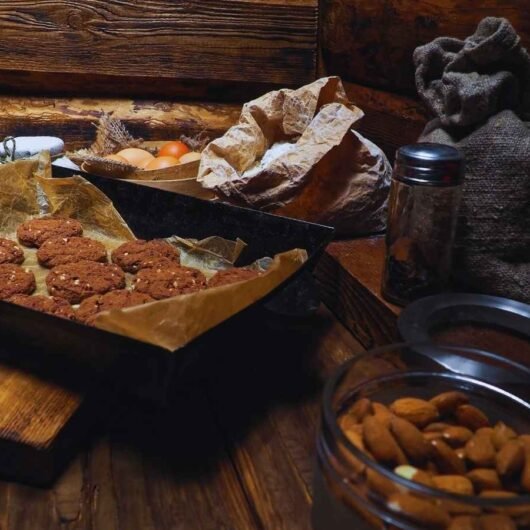
Glazing options
A beautiful glaze makes almond cookies look amazing and taste even better. The classic almond glaze needs just three ingredients:
- 2 cups powdered sugar
- 1/2 teaspoon pure almond extract
- 2-3 tablespoons milk
The perfect glaze should have a ribbon-like texture. Start with less liquid and add more until the mixture holds its shape for a few seconds when drizzled. Your glaze needs the right balance – fluid enough to drizzle but thick enough to set properly.
You can try these creative glazing ideas:
- Citrus glaze with lemon or orange zest
- Light dusting of powdered sugar
- Double layer of glaze for extra sweetness
- Colored glazes for holidays and celebrations
Place cookies on a wire rack with parchment paper underneath to catch drips. The glaze needs 1-2 hours to set at room temperature, depending on humidity.
The recipe works great with dairy-free milk alternatives that maintain the same taste and texture. Some people skip the glaze and press almonds into their cookie tops before baking. A light dusting of powdered sugar finishes these perfectly.
Your cookies must cool completely before glazing. This prevents the glaze from becoming thin or see-through. Let them rest 30 minutes after baking before adding any toppings.
Mix and match these ideas to create your own special variations. A simple sliced almond topping or a combination of mix-ins and glaze works beautifully. Each addition should highlight the delicious almond flavor that makes these cookies unique.
How to Make the Perfect Almond Cookie Recipe: Easy Steps
Course: CookiesCuisine: AmericanDifficulty: Easy24
servings15
minutes15
minutes180
kcalDelicious almond cookies with crisp edges and tender centers, featuring a rich almond flavor.
Ingredients
1 cup unsalted butter, softened
3/4 cup sugar
1 tsp almond extract
2 cups flour
1/2 tsp baking powder
1/4 tsp salt
1/2 cup toasted sliced almonds
Directions
- Preheat oven to 350°F (175°C), line a baking sheet.
- Cream butter and sugar until fluffy. Add almond extract.
- Mix flour, baking powder, and salt. Add to butter mixture.
- Chill dough for 30 minutes to 1 hour.
- Shape dough into balls, flatten, and press almond slivers on top.
- Bake 10-12 minutes until edges are golden.
- Cool on sheet for 5 minutes, then transfer to wire rack.
Recipe Video
Notes
- Use butter at 60-68°F.
Chill the dough for best results.
Watch closely while baking to prevent over-browning.
Conclusion
Making perfect almond cookies requires attention to each step of preparation. You must select premium ingredients and execute precise baking techniques. The right almond flavoring, exact temperature control, and proper dough handling create cookies with ideal texture and taste. These specific technical elements work together to ensure consistent, professional results in your kitchen.
Almond cookies are versatile treats that let bakers showcase their creativity. You can add mix-ins, toppings, or glazes to transform simple cookies into unique creations. Each variation keeps the delicate almond flavor at its heart. Once you learn these basic techniques and ratios, you can make bakery-quality cookies. Your family and friends will love the perfect combination of crisp edges and tender centers.
FAQs
What are the key factors for baking perfect cookies?
To achieve perfect cookies, consider these five essential tips: Ensure all ingredients are at the appropriate temperature, typically room temperature. Chill the dough before baking to help maintain shape. Aim for consistent size and texture among all cookies. Bake cookies one batch at a time for even cooking. Allow cookies to cool on the baking sheet initially to set properly.
Why do my almond cookies come out flat?
Flat almond cookies are often a result of an overly hot oven. In such conditions, the butter in the dough melts too quickly, spreading out before the cookies can properly form. This results in flat, spread-out cookies.
What causes almond flour cookies to crumble?
Crumbling in almond flour cookies can usually be traced back to incorrect flour measurement. For best results, weigh the almond flour to ensure accuracy. Additionally, allowing the cookies to cool completely on the baking sheet helps them set and prevents them from falling apart.
What ingredients are used in almond cookies?
Almond cookies typically contain the following ingredients: 1 cup of unsalted butter (soft yet cool enough to leave a thumbprint), 3/4 cup of sugar, 1 teaspoon of almond extract, 2 cups of all-purpose flour, 1/2 teaspoon of baking powder, 1/4 teaspoon of salt, and 1/2 cup of sliced almonds.

